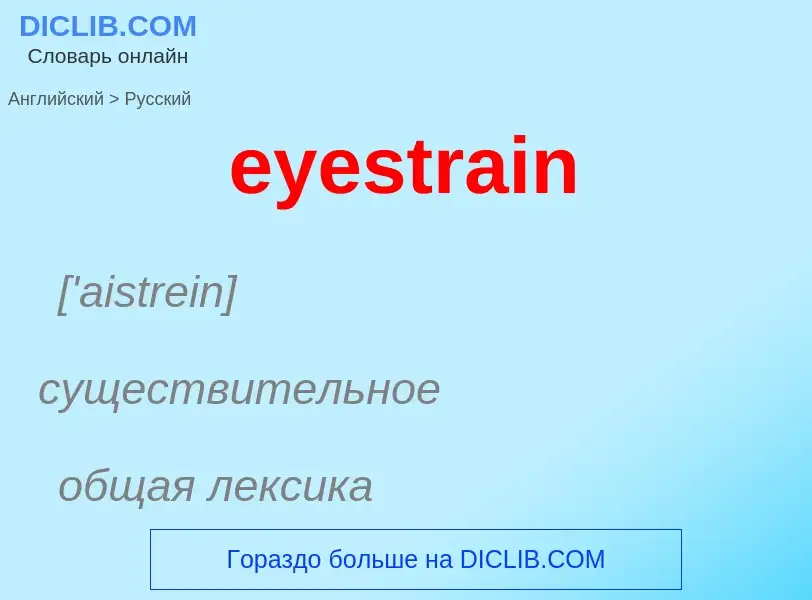Translation and analysis of words by ChatGPT artificial intelligence
On this page you can get a detailed analysis of a word or phrase, produced by the best artificial intelligence technology to date:
- how the word is used
- frequency of use
- it is used more often in oral or written speech
- word translation options
- usage examples (several phrases with translation)
- etymology
eyestrain - translation to russian
['aistrein]
существительное
общая лексика
чрезмерное напряжение глаз
зрения
[æsθə'nəupiə]
медицина
астенопия
слабость зрения
существительное
медицина
астенопия
слабость зрения
Wikipedia
Eye strain, also known as asthenopia (from Greek a-sthen-opia, Ancient Greek: ἀσθενωπία, transl. weak-eye-condition), is a common eye condition that manifests through non-specific symptoms such as fatigue, pain in or around the eyes, blurred vision, headache, and occasional double vision. Symptoms often occur after long-term use of computers, digital devices, reading or other activities that involve extended visual tasks which are broadly classified into external and internal symptom factors.
When concentrating on a visually intense task, such as continuously focusing on a book or computer monitor, the ciliary muscles and the extraocular muscles are strained. This causes discomfort, soreness or pain on the eyeballs. Closing the eyes for ten minutes and relaxing the muscles of the face and neck at least once an hour usually relieves the problem.
A page or photograph with the same image twice, but slightly displaced (from a printing mishap, a camera moving during the shot, etc.) can cause eye strain due to the brain misinterpreting the image fault as diplopia and trying in vain to adjust the sideways movements of the two eyeballs to fuse the two images into one.
Eye strain can also happen when viewing a blurred image (including images deliberately partly blurred for censorship), due to the ciliary muscle tightening trying in vain to focus the blurring out.

